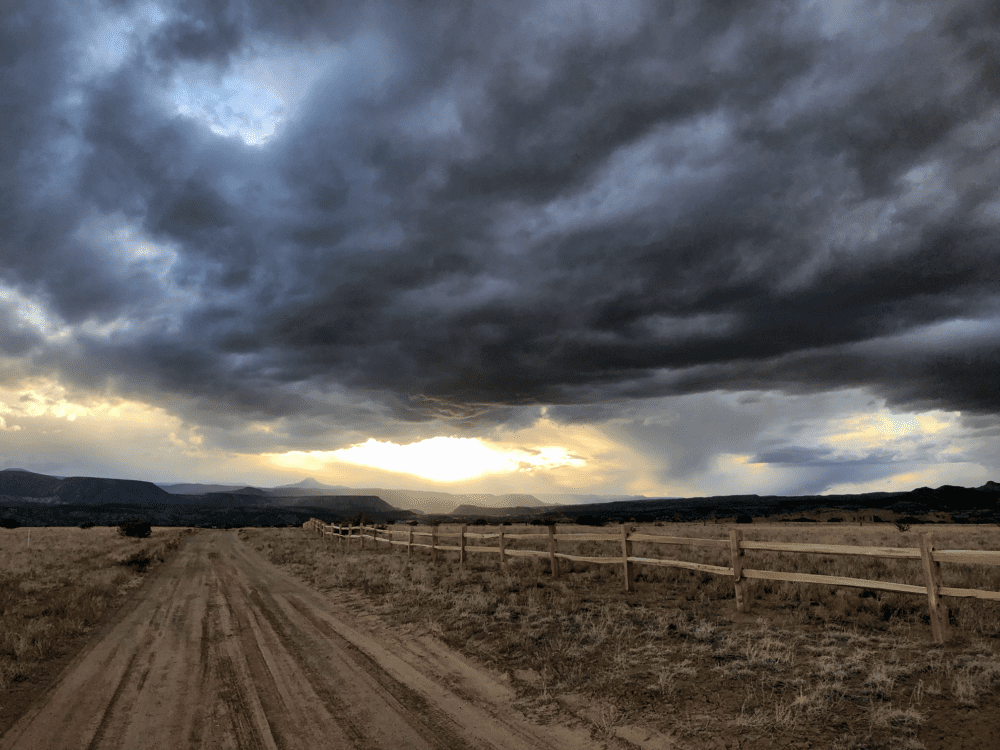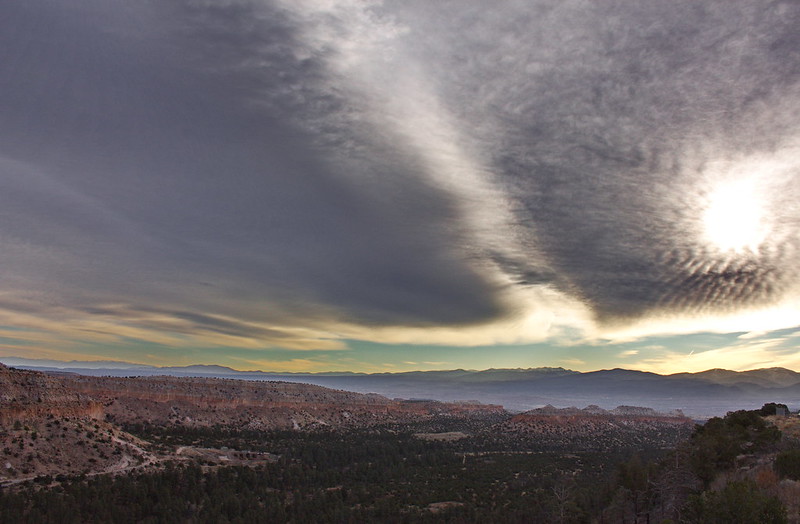
By Christy Wall, Atmospheric Scientist and 6th Grade Teacher at McCurdy Charter School
Have you ever heard somebody say “If you don’t like the weather, wait around a few minutes. It will change.” This statement is usually true for weather in the spring, especially when you live in New Mexico!
You might be wondering: “Why is our spring weather so unpredictable?” In the spring, New Mexico begins to get more sunlight as Earth rotates on its tilted axis. More sunlight means warmer temperatures, and this sets the stage for a battle between cold and warm air. These differences in temperature cause differences in air pressure — and differences in air pressure result in wind!

During winter, a band of strong winds high in the atmosphere called the polar jet stream transports weather systems into New Mexico. You’ll often hear meteorologists talk about cold fronts, which are the boundary of an approaching area of cold air. During winter, cold fronts often bring snow storms and very cold temperatures. In the days before these fronts pass, we often have strong winds from the south.
As winter becomes spring, the polar jet stream begins to move north, but sometimes it still dips far enough south to bring a cold front to New Mexico. One big difference in spring is that the south winds before the front bring warmer air with them. These days often feel abnormally hot. When the cold front moves through, it can still bring snow and cold temperatures with it. This means that the days prior to the arrival of the front can feel like summer, but when the front passes, we’re back to winter. If the polar jet stream doesn’t dip quite far enough south, New Mexico may miss out on the snow, but still have slightly cooler temperatures and high clouds when a cold front passes through.
My favorite part of spring is the change in our clouds. In the winter, the clouds we see overhead are primarily made of ice. Once it gets warmer, we have clouds made of both ice and water. This sets the stage for my favorite weather phenomenon — thunderstorms! As the ground heats up in the spring, rising air produces a special kind of cloud called a convective cloud. These clouds grow through vertical motion, making really cool shapes.
You can contribute to cloud science by noticing the clouds and reporting what you see to the GLOBE (Global Learning and Observations to Benefit the Environment) Program. GLOBE is a worldwide science and education program sponsored by NASA that helps us all learn more about our Earth systems and changing climate.
